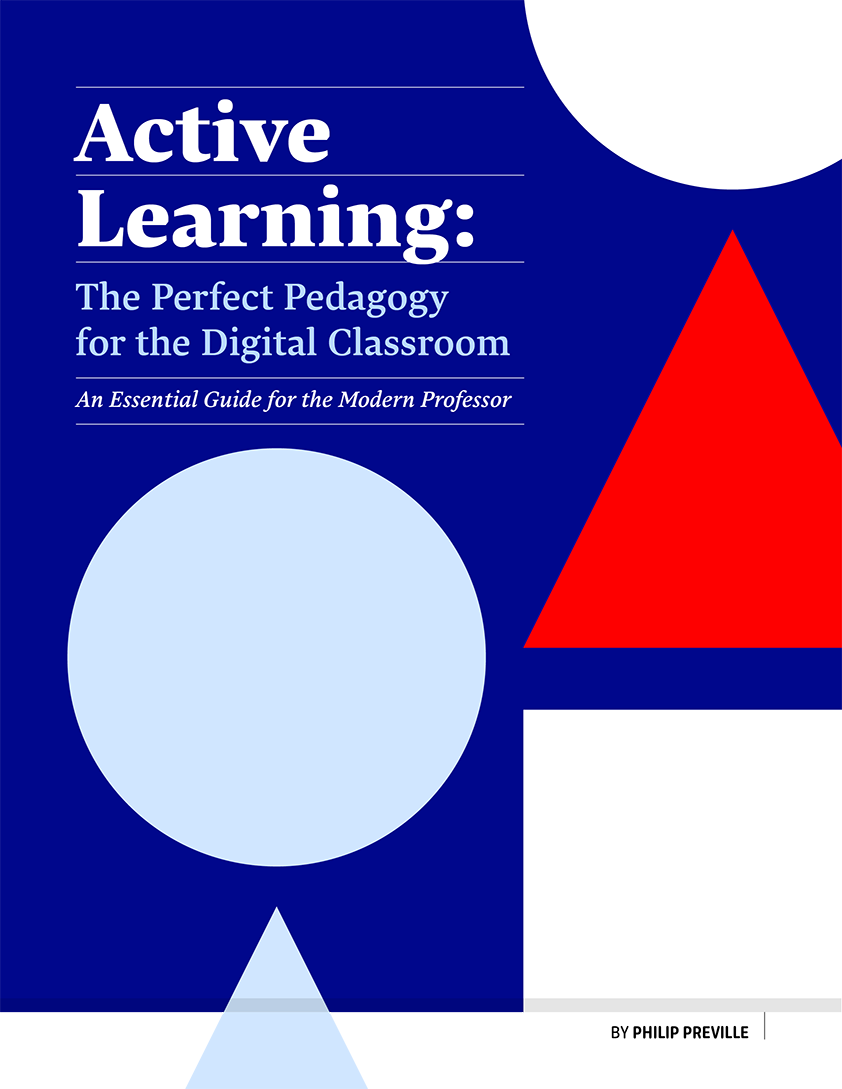Listening to lectures and taking notes isn’t effective if the student isn’t absorbing the material. The concept of self-regulated learning relates to learners taking cognitive control and playing an active role in their learning process. This includes the ability for the learner to plan for a task, monitor their own performance and reflect on and evaluate the outcome.
What is self-regulated learning?
One of the foremost researchers in the area of self-regulated learning—Barry Zimmerman, an educational psychologist who has since written more than 100 papers on the subject—describes it as the ability of students to develop essential knowledge, strategies and behaviors to increase learning.
The concept of self-regulated learning arose in the 1980s, but has become even more relevant in today’s curriculums. With so much uncertainty in the job market, self-regulated learning has become an essential skillset to facilitate lifelong learning, as well as the ability to adapt to changing job requirements.
An awareness of one’s learning process can dramatically improve learning, reasoning and comprehension, according to educational research (How People Learn from the National Research Council.) Awareness takes place through metacognition: thinking about your own thinking.
But self-regulation is rarely taught to students, nor does it come naturally to most people. Fortunately, these approaches can be taught and learned—and it’s why every educator have an important role to teach students how they think… about how they think.
Using self-regulated learning, “students take control of their own learning and the strategies they develop to favour this learning,” according to an article in the International Journal of Educational Technology in Higher Education.
Here are five tasks and/or learning strategies that instructors can use to incorporate self-regulated learning into their coursework or learning environment that will help students develop skills for lifelong, self-regulated learning:
1. Think-Pair-Share
With this approach, the instructor takes a break during a lecture to pose a question, sometimes one that’s open-ended. First, students reflect on the question, then discuss their thoughts with another student. Then, small groups of students discuss and share their thoughts with the class. This keeps students engaged during a lecture and encourages participation from everyone — but it also ends up challenging them to think critically about the content of the lecture, rather than passively taking notes.
2. Reading Reflections
Sometimes, we read words on a page but don’t fully understand their meaning or integrate the new information. Using this self-regulated learning approach, students are given two or three questions after a reading assignment—such as “What is the author’s main point?”—and write out their answers. While they receive credit for this short writing assignment, they aren’t graded on it; instead, the focus is on engaging students with the material, rather than solving problems.
3. Mastery Exercises
Mastery exercises take the form of quizzes. Taking a quiz in class isn’t exactly a new concept, but in a self-regulated learning context ‘mastery exercises’ have a different purpose. Typically they’re digitally delivered, offered on a regular basis (such as once a week) and aren’t a major component of a student’s grade. Students are, in fact, encouraged to take the quiz repeatedly to help them master course content and assess their own progress.
“Web-based quizzing can be an effective and efficient pedagogical tool when used appropriately and a major contributor to improved student learning,” according to a paper by the National Center for Academic Transformation. It’s most effective when the questions aren’t repeated when the student repeats the quiz, but when new questions address the same concept. (Questions randomly generated according to formulae fit the bill here.)
4. Peer Instruction
Reciprocal or peer instruction requires a student to take on the role of ‘teacher’ with another student or group of students. This doesn’t mean standing at the front of the classroom and giving a lecture. Instead, it could mean that students are asked a conceptual question based on materials they’ve studied before class, and a small group of two or three students explain their thinking to one another. This methodology is sometimes used as part of a flipped classroom, where students are introduced to learning materials prior to class, with class time used to discuss learnings and engage with peers.
5. Knowledge Surveys
Students fill out a survey at the start of a new course to get a sense of their baseline knowledge. However, students don’t answer specific questions; they simply indicate whether or not they could answer the question (and with what degree of confidence). Prior to taking the final exam, they would take the survey again to see how much they’ve learned — and where they might need further study. This approach can also be used before tests throughout the course, helping students evaluate their learning goals, and helping instructors tailor the course material to student needs.
The above learning activities can help develop self-regulated learning and let students take control of their own learning experience. Instructors, of course, still play an important role: they guide students through the process, set expectations, provide feedback and help them link new information to prior learning. Ultimately, self-regulated learning makes students think about how they think, setting them up with the tools, motivation and skills they need for lifelong learning.

Interested in learning how you can harness technology to make your classroom more active? Download our free guide, Active Learning: The Perfect Pedagogy for a Digital Classroom.
Fill in this brief form to get it now.


